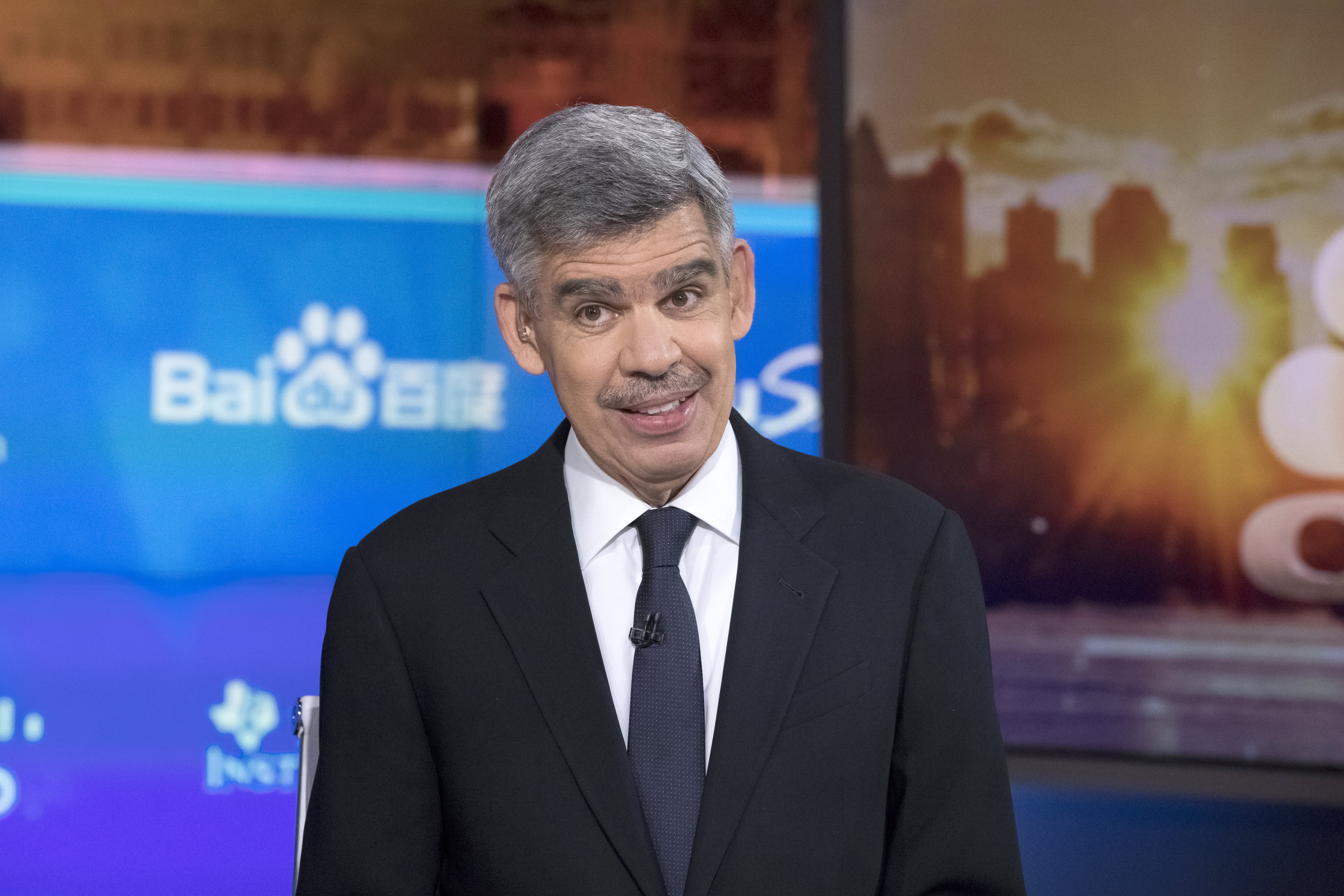Products You May Like
SYDNEY — In a country where real estate ownership dominates barbecue conversations and dinner parties, Australian Lili Zhang is like many homeowners.
While she has a healthy portfolio of properties, she is now facing the biggest threat to her investment, rising interest rates.
related investing news



Zhang, who is in her 40s and works in finance in Sydney, owns her own home worth $3 million Australian dollars (nearly $2 million) and invests in two other apartments in the city’s popular eastern suburbs.
To finance that, she has taken out bank loans worth about A$3 million (nearly $2 million).
Mortgage rates have fallen to below 2% in recent years, but like many countries, interest rates are rising rapidly in Australia as the central bank looks to tame inflation, which is at a record high of 6.8% in the 12 months to August.
The Reserve Bank of Australia has hiked interest rates for five straight months raising the official cash rate to 2.35% from just 0.1% in April in an effort to rid the “scourge” of inflation, according to governor Philip Lowe.
Not the time to panic, but the feeling of not seeing the end of the tunnel on rising costs is keeping me from sleeping tight at nights.Lili ZhangAustralian homeowner
Banks have passed on the increased borrowing costs through higher loan rates, which are now hovering between 4% and 5% and on track to rise further.
Zhang said her repayments will soon double to about A$16,000 a month and she is worried.
Her tenants are on fixed rental agreements and she cannot raise rents to cover her new mortgage outgoings. Neither is she expecting a commensurate pay rise.
“Not the time to panic, but the feeling of not seeing the end of the tunnel on rising costs is keeping me from sleeping tight at nights,” Zhang said, adding that the central bank was slow to react to rising costs.
“I thought we had inflation last year already, yet we didn’t see any steps to curb rising costs.”
“During the election [in May], everyone was blaming war or lockdowns. It’s just a convenient excuse,” she added.
“We are too late to tame inflation, I don’t need to be an economist to know … those bills when I check out at the [supermarket] counter are already telling me what to expect in the coming months.”
Zhang says she’s also cutting back on expenses, including her favorite takeaway coffees, which is exactly what the RBA wants to see.
But while overall spending may be trimmed, thus cooling inflation, the Australian housing sector now enters a new state of flux where buyers are reluctant to buy due to high interest rates on loans, or they’re waiting for prices to fall further. And sellers are not sure if they want to sell at a cheaper price.
In other words, the Australian housing market is in the midst of a standoff trying to adjust to a new normal.
With Australia’s house prices — among the highest in the world — falling, the conditions in Australia will offer an insight for economic watchers globally as interest rates continue to rise.
According to the latest Demographia international housing affordability report for 2022, Sydney ranked second after Hong Kong as the least affordable city globally. Melbourne is in fifth position.
“There’s definitely more of a standoff between buyers and sellers at the moment,” said Elia Owen, head of residential research at Corelogic, one of Australia’s leading property data providers.
“This can be seen through median days on market, which is sitting at 33 days nationally in the three months to August, up from a recent low of 20 days last spring.”
Home prices fall
National house prices have fallen for a fourth straight month as demand for homes start to slide due to higher costs of borrowing, according to Corelogic.
The monthly price fall in August was also the largest since 1983, Corelogic said in its most recent Home Value Index Report.
“Every capital city apart from Darwin is now in a housing downturn, with a similar scenario playing out across the rest-of-state regions, where only regional South Australia recorded an increase in housing values for the month,” Corelogic said.
Commenting on the latest Corelogic results, Capital Economics’ Australian economist Marcel Thieliant said that “rapidly worsening affordability due to soaring mortgage rates will result in prices across the eight capital cities falling by at least another 10%.”
In Sydney, Australia’s biggest city, home prices have fallen over 7% since prices started unwinding at the start of the year, just before interest rates lifted.
But the declines come after a massive price surge of nearly 30% in the post-Covid recovery that kicked off toward the end of 2020, driven by stimulus-driven programs to boost spending and supported by low interest rates.
There are clear signs that the rising cost of construction, a drop in consumer confidence and falling established house prices have seen a slowdown in demand for new homes…Housing Industry Association
The same pattern can be seen in Melbourne, the country’s second biggest city. Since hitting peak prices earlier this year, house prices in Melbourne have fallen nearly 5%.
According to Corelogic, current clearance rates at auctions in both cities have also closed lower at between 50% and 60% in recent weeks, despite the arrival of spring season, the most buoyant trading period for the industry.
Auctions are the most popular way to sell homes in Sydney, Melbourne and many parts of Australia and key indicator of market sentiment in the property market.
This means that just over half of the properties taken to auctions were sold. While still higher than clearances of 30% to 40% during the height of the pandemic, they were lower than during the boom years of 2013 to 2017, when clearance rates were consistently at around 70% to 80%.
More warning signs
Other indicators also point to the softness in the Australian housing market, particularly in major cities.
National industry association for residential building in Australia, the Housing Industry Association, warned that home construction has slowed.
“The fastest increase in the cash rate in almost 30 years will bring this building boom to an end,” it said in a note last month.
“There are clear signs that the rising cost of construction, a drop in consumer confidence and falling established house prices have seen a slowdown in demand for new homes from the record levels of 2020/21.”
Those who lend to developers and builders, such as Australia-listed N1 Holdings, say they are getting feedback that many buyers are not committing to purchases.
“The reduced borrowing capacity due to rate rises definitely put some buyers off the market. It’s probably a transitionary period when potential purchasers align their minds to a new budget,” said chief executive of N1 Holdings, Ren Hor Wong.
Appetite for housing loans has also fallen, according to the Australian Bureau of Statistics. They fell 8.5% in July after a 4.4% drop in June.
According to mortgage broker Catalyst, there’s a “distinct drop-off in purchase enquiry with the first rounds of rate increases.” The size of loans were also smaller and first-time home buyers, who have less borrowing power, have retreated.
But inquiries for loans improved in the past month, as borrowers began accepting higher rates and smaller loans, said Catalyst CEO Adrian Lee and head of residential mortgage and SME lending team Stephen Michaels.
No crash in sight
One of the most telling signs of a distressed property market is loan delinquencies.
In Fitch Ratings’ latest update, “30+ day mortgage arrears” have fallen in the second quarter of the year. Record-low unemployment has put a ceiling over delinquencies, it said.
However, Fitch pointed out there was a three-month lag after interest rates rise, and before a mortgage holder needs to start making higher repayments.
The ratings agency expects risks of delinquencies to continue mounting, particularly because Australian workers, while fully employed, will not see their wages rise accordingly.
“The extent of the pressure will also depend on the speed and level of interest rate rises and inflation,” it said.
Research group Roy Morgan said earlier this month that while some 20% of national mortgage holders were “at risk” of “mortgage stress” after the first 3 rate hikes, it was fewer than the number of stressed borrowers during the Global Financial Crisis in early 2009.
“The most likely scenario is for prices to continue to fall through to mid next year albeit a soft landing,” Lee and Michaels said.
Asked whether a “crash” or a 30% peak-to-trough fall in house prices similar to the global financial crisis in Australia could happen, Owen said it’s unlikely.
Mortgage serviceability is fairly steady in Australia due to rising incomes and record-low unemployment, Owen said. Australian mortgage lending is also prudent including a 3 percentage point buffer in place for mortgage serviceability assessment, she added.
However, as recessionary pressures mount vis-à-vis higher interest rates, the tight labor market keeping mortgage repayments intact could start to unravel.
“By the time cash rate rises take full effect for mortgage holders, there will be some more pain for households – just not enough to lead to a housing market crash,” Owen said.
Additionally, while recession is a risk for the housing market in Australia, this risk is partially offset by high commodity prices that keeps the Australia dollar buoyant and relieves some pressure for the Reserve Bank to follow US rate hikes.
